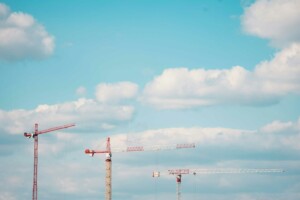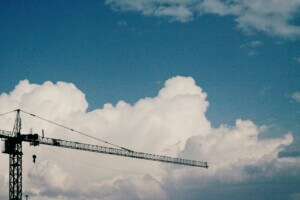After May’s Architecture Billings Index (ABI) figures pointed to sustained growth in both demand for architectural services and signed contracts, the June 2021 report released today by the American Institute of Architects (AIA) was similarly strong.
Is the architecture industry in for a prolonged recovery after a year of coronavirus-induced economic downturn? That’s hard to say, especially as COVID-19 cases trend upward across the United States and material shortages have slowed construction in the United Kingdom and France, portending one possible future for the industry stateside.
“With the current pace of billings growth near the highest levels ever seen in the history of the index, we’re expecting a sharp upturn in nonresidential building activity later this year and into 2022,” said AIA Chief Economist Kermit Baker, Hon. AIA, PhD, in a press release from the AIA. “However, as is often the case when market conditions make a sudden reversal, concerns are growing about architecture firms not being able to find enough workers to meet the higher workloads. Nearly six in 10 firms report that they are having problems filling open architectural staff positions.”
The ABI score, a composite average of demand and newly signed contracts, hit 57.1 in June (any number over 50 represents an increase from the month prior, any number under 50 a decrease). Although less impressive than the 58.5 figure in May, it still represents positive growth. That’s now the fifth consecutive month in a row, and as Baker mentioned, the AIA expects the trend to continue well into 2022.
The new project inquiries index, which tracks potential future demand by interested parties, was the highest performing metric in June, reaching a near-record high of 71.8, up from 69.2 in May. This indicates that developers and homeowners are bullish on the strength of the economy moving forward. However, the index of newly signed design contracts is still lagging behind, coming in at only 58.9 in June, compared to 63.2 in May.
Region-by-region demand remained comparably strong. The Midwest continued its months-long streak as the fastest-growing region, coming in at 62.0 in June, a slight dip from 63.4 in May. The West moved up a spot to second place, growing to 59.7 in June, up from 57.4 in May. The South slowed a bit, going “down” to 57.3 in June from 59.0 in May, while the Northeast remained in dead last once again, going from 54.2 in May to 53.2 in June. The Northeast was the region hardest hit during the pandemic and saw the greatest downturns in demand and signed contracts, and the slight month-over-month ABI gains point to an anemic recovery there.
Moving onto performance by project typology, firms specializing in commercial and industrial work once again came out on top. Likely buoyed by returning foot traffic, those firms saw demand move to 61.0 in June, up from 60.6 in May, representing a consistently strong bump. Multi-family residential demand has similarly continued to grow, moving to 57.9 in June from 59.5 in May; not as strong of an increase but growth nonetheless, although lumber prices could still be holding back this particular project type. Institutional demand grew at a steady pace, rising to 57.3 in June from 57.1 in May. Finally, mixed-practice firms saw demand for their services grow only a modest amount, coming in at 56.4 in June compared to 57.9 in May.











